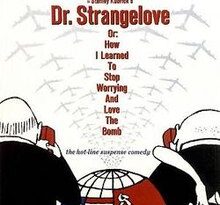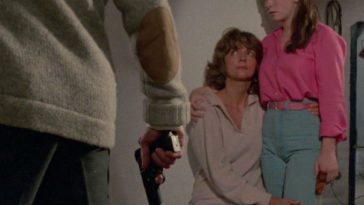Kids are creepy if you ask me. Sure, they don’t start out that way, but the older they get the more mean they seem to be. Maybe I think this because I’m getting older and I don’t understand whatever generation this is. Or maybe it’s because there have been so many horror movies with malevolent kids.
Granted, evil kids are nothing new. From stories such as “The Taming of the Shrew” and before, there have been tales about how kids aren’t as innocent as we like to think they are. Oh, and as I mentioned horror movies in particular have exploited this fear. From The Omen, The Bad Seed (which I believe started out as a play) to lesser known films such as the goofy but endearing Bloody Birthday and the underrated British film The Children, this genre has a thing for evil children.

You can add 1976’s Who Can Kill a Child? (Mondo Macabro) to the mix. Directed by Narciso Ibáñez Serrador (who also directed the underrated-and essential-Gothic/Giallo/Proto Slasher hybrid The House That Screamed), WCKAC is the walking definition of the kind of horror film that tends to get mentioned a lot when it comes to great horror movies that don’t get a lot of attention. It’s also a case where that assumption proves to be right-this is a real gem of creepy as Hell horror, and one of the best “evil kid” movies ever made.
Opening with unsettling footage of international atrocities and how they harmed children, our film then moves to idyllic Spain. It is here that English couple Tom (Lewis Fiander) and Evelyn (Prunella Ransome) are spending some time. After watching some of the festivities, they think “hey, why don’t we go head out to this Island?” I mean, what’s the worse that can happen?
Well, it turns out that said island doesn’t seem to have any adults around-and if there are, they have been driven mad or will be killed off. In their place is a whole bunch of children. Children who almost never talk, and constantly stare at people. Children who are inevitably prone to acts of horrific violence they direct towards adults, and seem to be able to pass this trait along to other children. Children who aren’t too pleased with Tom and Evelyn being there.

Once the couple enter the Island, WCKAC creates a sense of dread that never gives up. The moment Tom and Evelyn try to act friendly, there is clearly something off about these kids. They are occasionally prone to laughter, seem to travel in groups and mostly speak single word sentences. It really isn’t until 50 something minutes in that we see an adult being attacked-first by a little girl, then by a group of kids. Thankfully, Serrador doesn’t linger on the killing, instead using quick cuts and then the sound of cheering to amplify the horror of the situation. This is the kind of horror movie that can be bloody, but is much more interested in creating a sense of unease instead of splashing the audience with gore.
Watching it, I also couldn’t help but notice how it at times feels like a Euro take on the kind of films George Romero was making/would go on to make. As far as I can tell, it’s the first Euro horror film outside of Jorge Grau’s The Living Dead at Manchester Morgue (which is also the first post “Night of the Living Dead”, pre “Dawn of the Dead” zombie movie that feels like a true successor to his work both as far as zombies and social commentary is concerned) that feels truly inspired by his films (the “Blind Dead” films may have been made to capitalize on them, but thematically owe nothing to Romero’s beloved franchise.)
Part of this has to do with the theme of infection. While the children never bite anyone and can only infect other kids via staring directly into their eyes, it still captures the same kind of apocalyptic horror Romero captured in both his zombie series and in lesser known works such as The Crazies. It also feels like a movie that has something to say as far in political and social terms. The opening narration spells it out-that society and the atrocities it commits can have a massive affect on children. In watching these kids becoming remorseless killers, it feels as if Serrador is possibly using this as a message about abuse, and that he is using this scenario to say something about that. Or maybe he just wanted to make a horror movie about evil kids.

Either way, it’s still an effective little shocker that manages to be both a haunting experience and a cinematic bunch in the gut more than 40 years later. The kind of horror movie that defines the term “hidden gem” to a T. Something that sticks with you long after it ends. Isn’t that what the best horror movies-hell, the best movies in general-should do?









